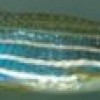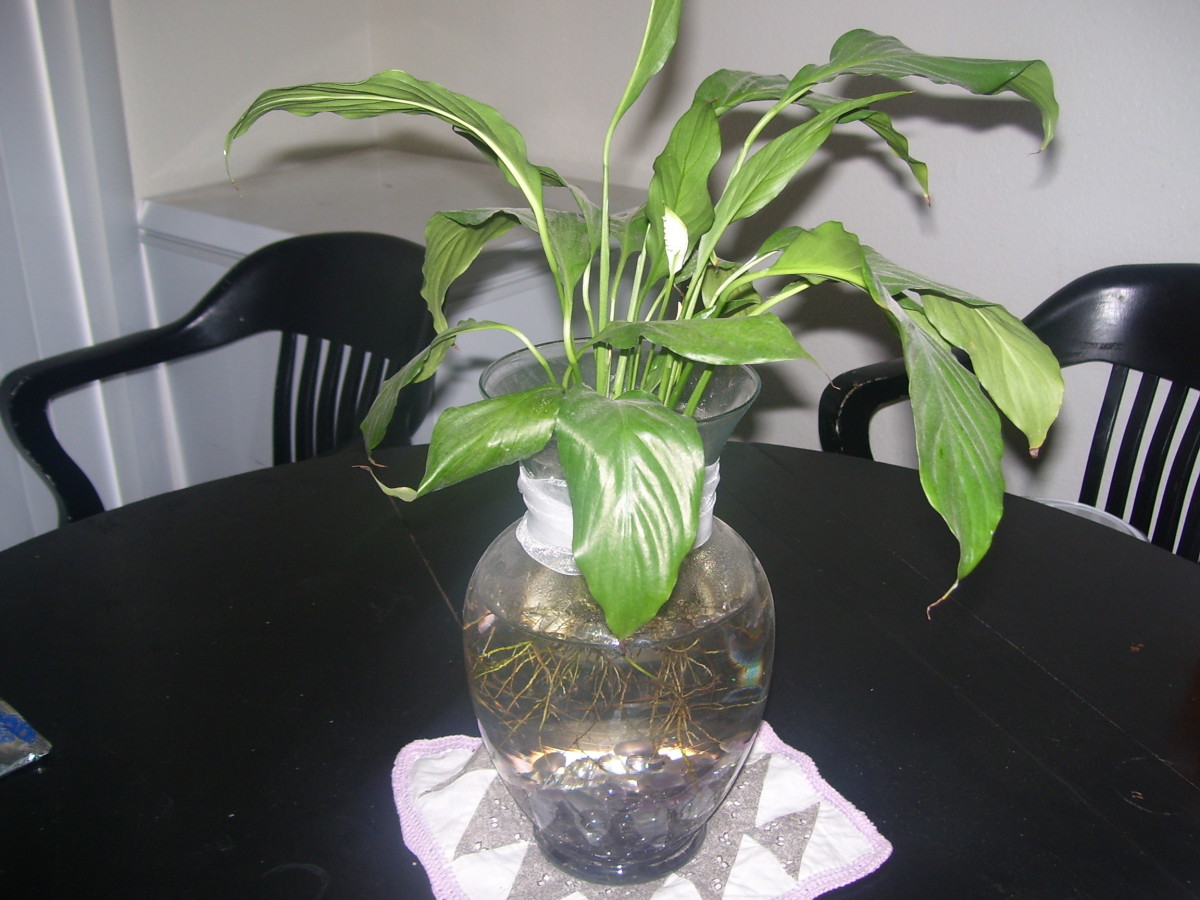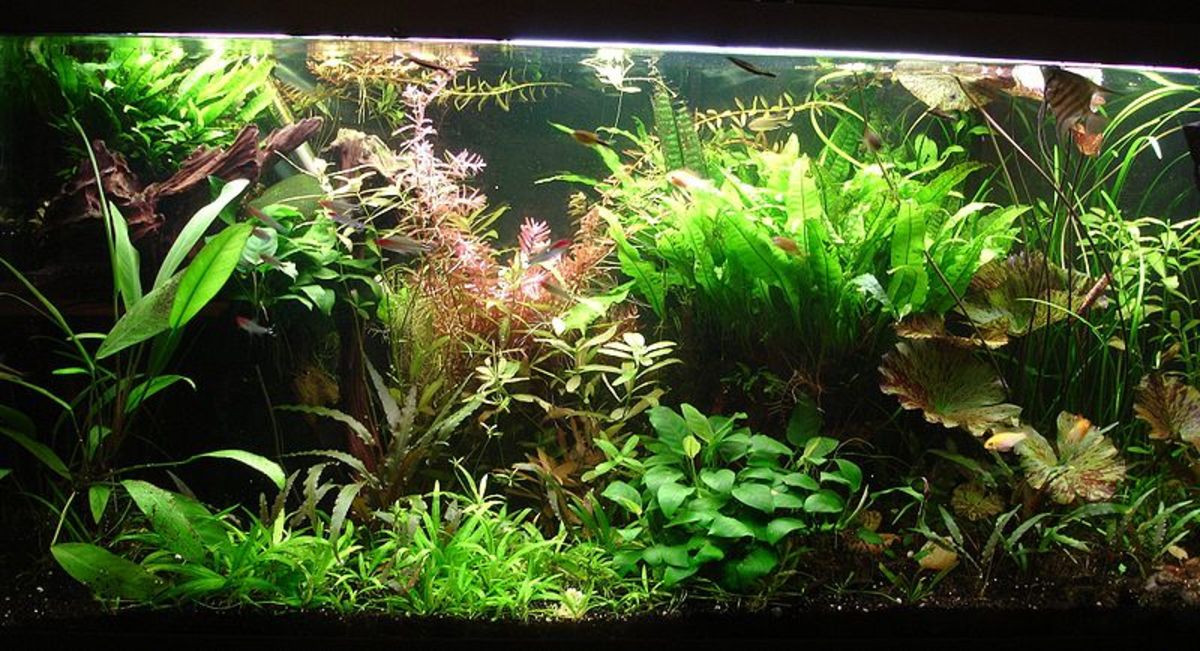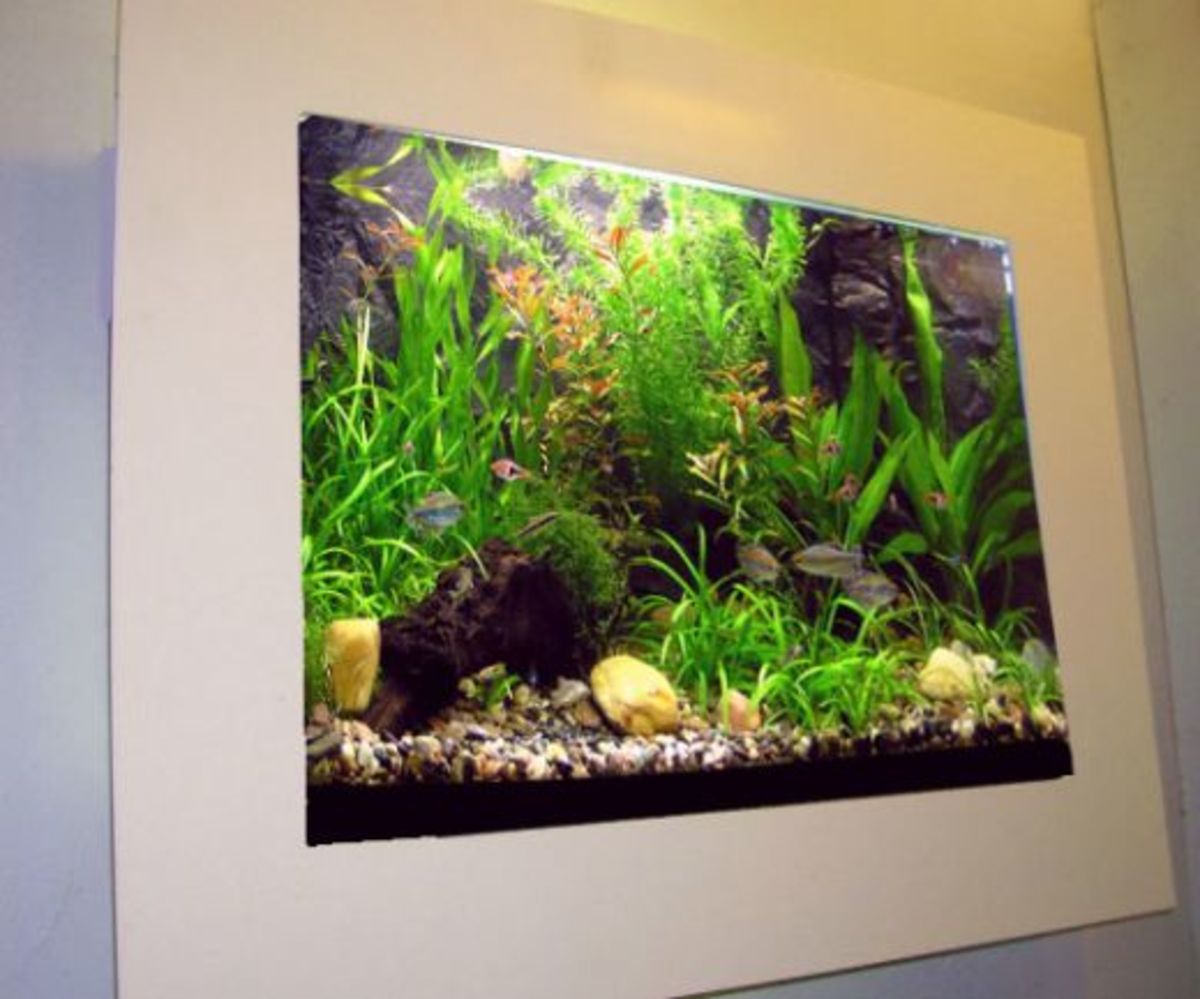- HubPages»
- Pets and Animals»
- Tropical Fish & Aquariums»
- Aquariums & Fishbowls
Hassle Free Fishless Aquarium Cycling How To Cycle a New Fish Tank
Why Cycling a Fish Tank is Important
Cycling a fish tank is basically the process used to establish necessary colonies of what aquarists call ‘good bacteria’. Fish naturally produce ammonia, which will become deadly to the fish if left untreated. In the wild, a natural system to handle fish waste is present, but in the new aquarium, bacteria to handle the job needs time to build up colonies.
The first goal of the cycling process is to produce enough ammonia consuming bacteria –known as Nitrosomonas- to effectively handle the task of turning ammonia into nitrites. Unfortunately, nitrites are also deadly for fish.
So the second goal in the cycling of an aquarium is to produce enough nitrite consuming bacteria –known as Nitrospira- to effectively turn nitrites into nitrates. Nitrates are much less harmful, and their level is effectively maintained by simply performing regular 15% water changes on your tank every week or two once cycling is completed. The more fish in your tank, the more often you will need to perform partial water changes.
If you try to keep fish in an uncycled aquarium, you will probably watch a lot of fish die. While some fish are more hardy than others, they will at the least suffer from permanent gill damage if forced to live in unsanitary water. This well shorten their lives.
It can be difficult to be patient and wait while your new aquarium is cycling. But a little patience will pay off in the long run with a healthier, cleaner fish tank, and happier fish.
This Hub Includes Info. On:
- Why Cycling a Fish Tank is Important
- What All is Needed to Cycle a Fish Tank
- The Process of Cycling a Fish Tank
- Shortcuts to Cycling a Fish Tank
Necessary Supplies to Cycle a Fish Tank
- Pure Ammonia
- Ammonia Test Kit
- Nitrite Test Kit
To perform a fishless ‘cycling’, you will need to have your tank set up and running with filter, substrate, whatever décor you have already purchased for it, though more may be added later, and if you are using live plants, then they too should be added. It’s a good idea to leave your water level a little low to create a greater surface disturbance by the filter output. This will supply more oxygen to the fish tank, which is helpful during the cycling process.
If you plan on a tropical aquarium which will generally need a heater, it’s a good idea to go ahead and add the heater for the cycling process and set it at a mid to high 80’s temperature. Bacteria will grow faster in a heated environment. That said, it isn’t necessary if you are planning a coldwater or subtropical tank, or haven’t purchased a heater yet.
You will also need to have ammonia on hand, and it must be pure ammonia with no additives whatsoever except for perhaps water. Check the ingredients to be certain your ammonia is pure. Some prefer to use fish food to seed the ammonia process. I prefer to use direct doses of ammonia, because it is much less messy, and takes less time. Using food, you must first wait for it to begin decomposing and turning into ammonia. I just prefer to skip that step and avoid the mess it leaves in your tank and add ammonia directly.
In addition you’ll need testing kits for ammonia and nitrites. You may also want a kit to test for nitrates, but it isn’t necessary. It’s better to have kits that will give you exact ppm’s rather than the vague test strips, particularly in the case of the ammonia test kit. The color changing kits show generalized results, and for cycling a fish tank you’ll need to know the exact ammonia content of your water.
The Process of Aquarium Cycling
Again there are only two goals to cycling a fish tank, producing Nitrosomonas and producing Nitrospira, both in quantity enough to sufficiently handle the expected waste output of the fish you plan on keeping. Your tank must contain ammonia to begin producing ammonia consuming bacteria (Nitrosomonas) and it must have nitrites (produced by Nitrosomonas) in order to begin producing nitrite consuming bacteria (Nitrospira).
So to start the process of cycling a fish tank, simply add ammonia. In fact, other than testing the water, adding ammonia is all you’ll need to do during the entire cycling process.
You want to add enough ammonia to get a reading of 5 ppm on your ammonia test kit. Depending on how big your fish tank is, you may want to start with a tablespoon or for a small tank just a couple of drops delivered via eye dropper. Your results will also vary depending on how much water is present in your ammonia solution. Add a bit to your fish tank, wait about 10 minutes to let the filter disburse the solution throughout your tank, then test to see what you have. Add more of the ammonia solution accordingly until you have the desired 5 ppm reading.
Continue every other day during the first phase of the cycling process to test for ammonia and keep adding more to bring the ammonia level back up to the 5 ppm range. Try to perform the test at the same time on these days. As the Nitrosomonas bacteria colonies begin to grow and consume the ammonia, you will notice that your ammonia levels are dropping quicker. Begin testing and adding additional ammonia every day at that point. You may also want to go ahead and begin testing for nitrites.
As your ammonia levels are dropping more quickly, your nitrite levels will begin to raise. This is because the Nitrosonomas bacteria colonies are growing larger, consuming the ammonia more quickly and turning it into nitrites as we discussed above. Soon your nitrite level will spike, giving you a very high reading, and your ammonia level will read at zero ppm. You have accomplished the first goal of cycling a new fish tank. This generally takes about 2 to 3 weeks.
When that happens, you can begin adding less ammonia to the aquarium, but not too much less. Remember you now have a colony of ammonia consuming bacteria to feed, so continue adding enough ammonia to get a level of at least 2 ppm every day.
Keep testing your nitrite levels at this point. As the nitrite consuming bacteria –Nitrospira colonies- grow, the nitrite level will continue to fall. The day your nitrite level reaches zero, you have accomplished the second goal of cycling a new fish tank.
If you tested your water at this point for nitrates, you would have a very high reading. Testing for nitrates at this point however isn’t really necessary, since the high nitrate level is now pretty much a given. Just go ahead and do a large water change of 70 to 80%, replacing it with dechlorinated fresh water to get rid of the nitrate build up. Your tank is now cycled and ready to go.
If you have a heater installed, be sure to lower the temperature control to a more acceptable temperature for the type of fish you plan to keep in the fish tank. It is important to buy and add your fish only a few at a time, and keep in mind that generally speaking it’s best to add the more aggressive fish to your aquarium last.
Speeding Up the Cycling Process
If you wish to speed up cycling an aquarium, there are a few things you can try. First let me say that using live fish isn’t among them. Using live fish does not make the process go any faster, it just tortures the fish and damages their gills.
But you can try using a filter medium from an already established aquarium. This will give you some already established colonies of both of the necessary bacteria. Not enough, you understand, to effectively handle the bio-load (waste products) of live fish, but enough to give you a jump-start on the cycling process. Likewise you can use some gravel, or other tank décor as well, but filter medium will be the best option, as that is where the largest amount of the bacteria will be. Do make sure you trust the source. Many fish stores have diseases and unhealthy bacteria present in their tanks, and you don’t want to contaminate your new tank.
Because of this, it’s a good practice to set up a smaller fish tank as well to use as a quarantine tank for keeping new fish in until your sure they are healthy. This smaller secondary tank can also be used as a hospital tank and a breeding tank. However, maintaining a second tank can be unpractical for many people, so just be sure to observe fish closely before you purchase them, and to keep a good eye on them for a week or so after adding them to your fish tank at home.
Another way to speed up cycling a new fish tank is to purchase bacteria starter from a fish store. These have mixed results; the bacteria in them may not still be alive, which would make them useless. You may have better luck if purchasing them straight from the manufacturer where they will be freshest. Reportedly the best of these bacteria starting products is BioSpira.
If using either of these bacteria jump-starts, the process for cycling a new fish tank remains pretty much the same, but the process should complete itself quicker. Add ammonia every day to accomplish the 4 to5 ppm reading, while testing daily. Your nitrite spike will come quicker with the bacteria jumpstart, so keep an eye on the level of nitrites as well. When your ammonia level reaches zero, begin adding less ammonia to achieve a test reading of about 2 ppm, and watch for the nitrite spike and fall. When it reaches zero, you’re done. Commence with the large water change to eliminate the buildup of nitrates in your aquarium, adjust your heater, and add fish.
Happy fishkeeping!



